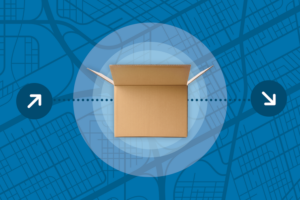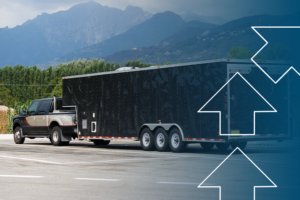Shipping small loads without filling a whole truck is smart for businesses. This method lets many shippers use one truck and split the cost, which is great for sending small consignments.
However, less-than-truckload (LTL) shipping involves many steps and different delivery times, making it important to focus on keeping things safe and ensuring they get where they’re going on time. A good LTL service keeps customers happy and strengthens the supply chain by cutting down on problems and costs.
Picking an LTL carrier known for being safe and dependable is key for smooth LTL shipping. It is crucial to ensure your items move without trouble through the supply chain and get to their place safely.
When delving into LTL shipping, it’s like setting up a lemonade stand — you must be prepared for everything! Each detail counts, from how you package your lemons to picking the best spot on the street. Here’s a breakdown of the essential factors you need to consider for safe and successful LTL shipping:
PROPER PACKAGING AND LABELING
Proper packaging is your first defense against the rough-and-tumble journey of LTL shipping. Imagine sending a dozen eggs through a soccer field — you’d want them wrapped up safely, right? Here’s how you can ensure your goods are snug and secure:
- Choose the Right Box: Use new, sturdy boxes that withstand pressure.
- Pack Strategically: Use bubble wrap, packing peanuts, or foam inserts to protect items from jostling and impact. Double boxing is a wise choice for heavier items.
- Seal Securely: Tape all seams of your box with strong packing tape. This is like putting a good lock on your door.
- Label Clearly: Write the destination and return addresses. Use large, bold labels for special instructions like “Fragile” or “Do Not Stack.” It’s like putting a sign on your car saying “Baby on Board”; people tend to be more careful.
ACCURATE WEIGHT AND DIMENSIONS
Getting the weight and dimensions right is crucial. If you estimate too low, you might incur extra costs, and your items might not fit on the planned shipment. Be precise: Measure your packaged item’s length, width, and height. Use a reliable scale to ensure the weight is accurate.
Suppose you’re shipping a batch of books. If the box is measured incorrectly as 14x14x10 inches instead of the actual 16x16x12 inches, it could affect how the cargo is loaded and lead to higher charges or damage.
CARRIER SELECTION AND REPUTATION
Choosing the right carrier is like picking a teammate for a relay race — you want someone reliable and can go the distance.
- Research: Look up carrier reviews online, ask other businesses for recommendations, and check their safety records.
- Check Services: Ensure the carrier offers the specific services you need, like expedited shipping or special handling.
- Reliability Matters: A reliable carrier is punctual, offers good customer service, and has transparent pricing. It also keeps its trucks in top shape—no one wants a breakdown mid-journey!
Tracking and Visibility
Tracking your shipment is like following the breadcrumb trail out of the forest — it keeps you informed and prepared for its arrival.
- Real-Time Updates: Opt for carriers that offer real-time tracking. This way, you can see where your shipment is at any moment, just like tracking a pizza delivery online.
- Notifications: Some carriers provide notifications at key stages of the delivery process—when the haul departs, if there are delays, and when it’s about to arrive.
INSURANCE COVERAGE
Insurance (or added protection from uShip) is your safety net, ensuring that you’re not left empty-handed if things go south.
- Assess Needs: Evaluate the value of your goods and the risks involved in transit. If you’re shipping electronics or glass, you might want extra coverage.
- Understand Policies: Know what the carrier’s insurance covers and what it doesn’t. If their coverage is lacking, consider third-party insurance.
- Types of Insurance: The transportation carrier offers insurance covering liability for damages caused by the driver or company during accidents and cargo insurance for the items transported, such as cars.
By keeping these factors in mind—packaging, weight accuracy, carrier reputation, tracking, and insurance—you’ll be well on your way to mastering the art of LTL shipping. It’s like being an orchestra conductor; every section needs to be in tune. Here’s to shipping success — may your goods always arrive safe, sound, and on time!
MORE ON PROPER PACKAGING AND LABELING

When you’re set to send things, from small items to big ones like cars, how you pack them is key for keeping them safe while they move. Let’s go over some easy steps on how to wrap both kinds of items the right way.
Packing Goods for LTL Shipping
Packing smaller items needs a bit of care to make sure they get to where they’re going safely:
- Choose the Right Box: Find a sturdy box that fits your items well. Don’t want too much space, as that might let things slide around and get damaged.
- Wrap Items Individually: Use bubble wrap, foam, or packing peanuts around each item. It’s like wrapping gifts — each receives a cozy layer to keep it safe from knocks and bumps.
- Seal and Tape: Close the box using strong packing tape. Ensure all openings are taped well so nothing spills during the move.
- Label Clearly: Write where the box needs to go and where it came from. If what’s inside is breakable, slap on some big labels that say “FRAGILE” or “HANDLE WITH CARE.”
Packing Automobile Parts for LTL Shipping
Shipping a car part takes a bit more prep to keep it from getting banged up on the road:
- Clean and Prepare the Car Parts: Give your car parts a good wash first.
- Secure Loose Parts: Tie down or remove parts that might move or stick out, like antennas or mirrors. If possible, put these bits inside the car part.
- Document the Vehicle’s Condition: Take photos and jot down any marks or damages. This record is handy if you need to make an insurance claim or open a case later because of shipping damage.
- Use a Reliable Carrier: Pick a transport company that handles car shipments safely. They should have good insurance options, too, for your peace of mind.
ACCURATE WEIGHT AND DIMENSIONS
It’s key to know the right weight and size when you send stuff, whether a tiny box or a big item. This isn’t just to make sure it can fit in the truck. It also helps you pay the correct price for sending it and keeps your item from getting damaged.
Why Exact Weight and Dimensions Matter
- Correct Pricing: The price to send your box often depends on how much room it takes on the truck and how heavy it is. If your guess is off, you could pay too much. If you guess too low, you might get charged extra fees later.
- Safety: Knowing the exact weight and size helps the delivery company plan how to load the truck best. This ensures that all the parcels, including yours, stay safe and steady while traveling. It could be risky if a car is packed incorrectly because the sizes and weights are incorrect. The truck might be tough to drive safely, especially if it’s heavy or shifting.
How to Measure Your Shipment
Here’s how to make sure you’ve got the right measurements:
- Use the Right Tools: Get a good tape to measure size and a scale to weigh. Don’t use bathroom scales for small items. Use a shipping scale for accuracy.
- Measure Dimensions: Record the size of your package by measuring its length, width, and height. If it’s an odd shape, measure at its longest, widest, and tallest parts.
- Weigh after Packing: Make sure to weigh your package after it’s packed. The packaging might add more weight.
- Double-check: It’s smart to check measurements and weight twice to be sure.
CARRIER SELECTION AND REPUTATION
When you need to ship something, choosing the right shipping company, also called a carrier, is like picking the best taxi driver for a safe and timely ride. Here’s how you can make sure you choose a good one.
Tip 1: Check Their Reliability and Safety Records
Just like you’d glance at restaurant reviews before deciding where to eat, it’s crucial to check out how reliable and safe a carrier is. You want your items to arrive on time and in one piece, right? So, pick a carrier with a solid reputation for dependability. You can chat with friends who’ve sent similar items before or dive into online customer reviews to see what others are saying.
Tip 2: Look at Their Safety Records
Safety records give you a snapshot of how often a carrier has run into accidents or safety mishaps. A company with a strong safety record typically experiences fewer accidents, which suggests it handles packages with extra care. You can usually find this information on its website, or feel free to reach out and ask the company directly.
Using Online Platforms for Carrier Selection
Websites like uShip simplify the process of picking a carrier company. You just let them know what you want to ship and where it needs to go, and they line up various companies that can handle the job. You can browse through user reviews, compare prices, and even check out the safety records of different carriers. It’s a great way to make an informed decision all in one place.
- Read Reviews: Just like reading movie reviews before you go to the cinema, reading what other people say about their experience with the carrier can give you a good idea of what to expect.
- Compare Prices: Websites like uShip allow you to see different prices in one place to find the best deal.
TRACKING AND VISIBILITY
When you send a package, being able to check where it is and when it will arrive is like keeping an eye on your pizza order on a delivery app. This is what we call tracking and visibility in LTL shipping, and it’s really useful, especially for LTL shipping, where your package shares space with others. Here’s how it helps and how you can use it.
Benefits of Real-Time Tracking in LTL Shipping
- Know Where Your Package Is: Real-time tracking lets you see exactly where your package is at any moment, just like watching your food delivery driver approach your house. This is great because you know your package is on its way and can see if it’s stuck somewhere.
- Plan Better: Since you know where your package is and when it’s likely to arrive, you can plan accordingly. For example, if you know your package will arrive on Tuesday, you can ensure someone is there to receive it. This avoids the package being left outside unattended or needing to be returned to a depot.
Using Technology for Shipment Visibility
Today, most carriers use technology to give you a clear view of where your package is. You can check this using the company’s website or a mobile app. Here’s how to make the most of it:
- Check Updates Regularly: Most shipping websites or apps will update the location of your package as it moves from place to place. You can often get these updates sent directly to your phone or email, so you always know the latest status.
- Use the Tracking Number: You’ll get a tracking number when you send a package. This number is like a ticket to a show. You enter it on the carrier’s website or app, and it shows you where your package is and where it’s been.
- Contact Customer Service if Needed: If you see something unusual in the tracking information, like your package hasn’t moved for several days, you can contact the carrier directly or lean on uShip to help facilitate communication. Either party can help determine what’s going on and ensure your package gets back on track.
ADDED PROTECTION AND INSURANCE COVERAGE
When you send something valuable, like shipping a car, having insurance or added protection is a smart move. Insurance makes sure you’re covered if something goes wrong. Let’s break down why insurance is important and the types you might encounter.
Understanding the Importance of Cargo Insurance or Added Protection
Most US car carriers have insurance up to $350,000, but this only covers the total value of all cars, not each one. If something bad happens, there might not be enough money to cover the full value of your vehicle unless you have extra insurance.
Types of Coverage and How They Protect Shipments
- Customer Insurance: Your typical car insurance may cover your vehicle when an auto carrier is transporting it. Check with your insurer to ensure your policy includes coverage for any damage to your car while it’s with the transport company.
- Carrier Insurance: Carrier insurance is the protection the carrier offers to cover any harm to your car. All car carriers must have insurance, so make sure the one you choose follows this rule. Ask for insurance details before deciding on having them move your car to a different place.
- Broker Insurance: If you work with a broker (someone who arranges transport), they should have insurance. This doesn’t cover your car directly but protects you if the broker doesn’t hire a good transporter or if there are other problems. It’s like having a safety net when working with someone who suggests restaurants—you want to ensure they have a good history!
- uShip Protection Plan: Access great rates on all-risk, LTL shipping protection right at checkout. The best part? You can work directly with uShip for a fast, easy, and painless reimbursement process.

CONCLUSION
To wrap up, remember that safe and easy LTL shipping requires attention to many key details. From picking the right boxes and tags to keep your goods safe to choosing a carrier known for being on time and very secure, every choice you make impacts how your shipment turns out. Plus, knowing your item’s exact weight and size and using live tracking keep you in the loop and help you handle your deliveries well.
With these tips in mind, why not look deeper? Explore your LTL shipping choices with uShip, where you can judge services, read what customers say, and find a carrier that fits just right. Make a move toward worry-free shipping today!
MOST COMMON QUESTIONS (PAA) RELATED TO LTL SHIPPING
What is LTL shipping?
LTL shipping, or less-than-truckload shipping, refers to transporting goods that do not require the full truck space. Various shipments share the same truck space.
How do I package items for LTL shipping?
For LTL shipping, choose sturdy boxes, wrap each item in protective materials like bubble wrap, and secure the boxes with strong tape. Label each box clearly with addresses and handling instructions.
What factors affect LTL shipping rates?
The rates for LTL shipping are determined by the weight and size of your shipment, the distance it travels, and additional services like expedited shipping or special handling.
How can I track an LTL shipment?
You can track an LTL shipment by entering the tracking number provided by the carrier on its website. This allows you to see where your shipment is and its current status.
Do LTL shipping carriers provide insurance?
Yes, most LTL carriers offer basic insurance, which covers part of the value of the goods. You can purchase additional protection to cover your shipment fully against loss or damage.



